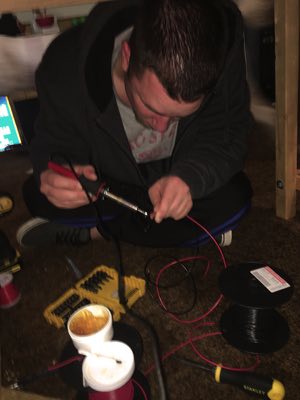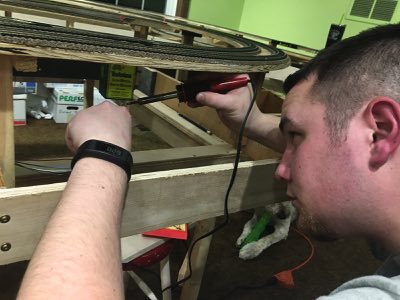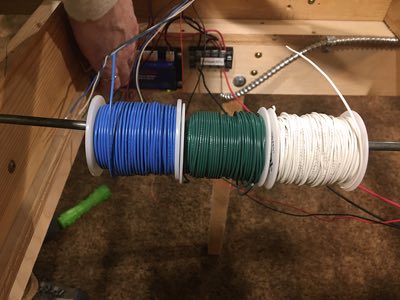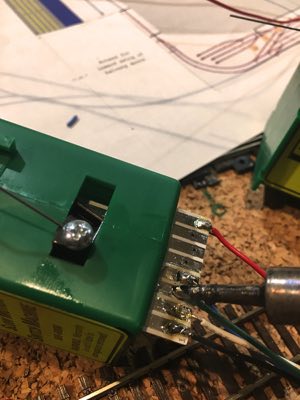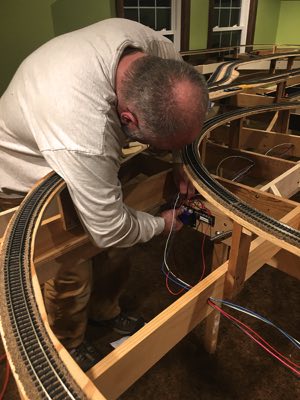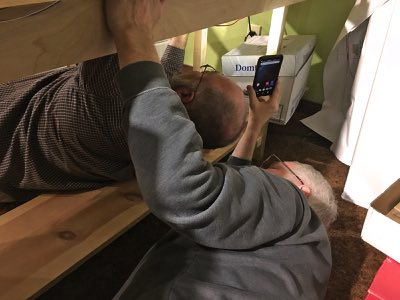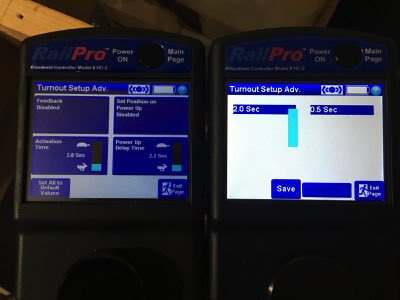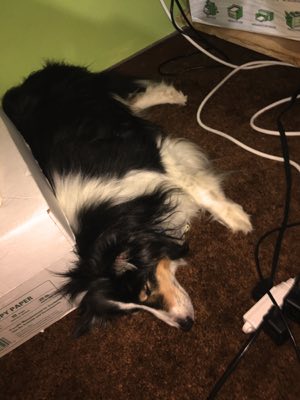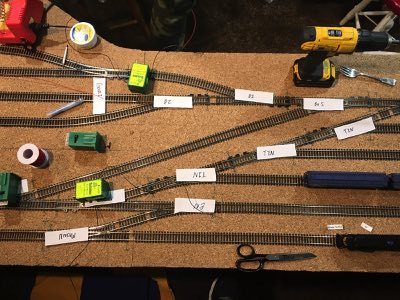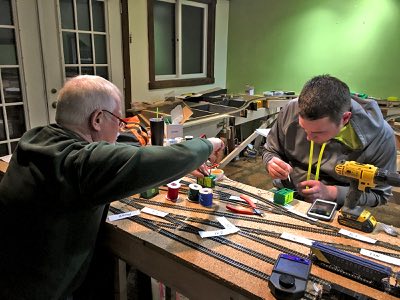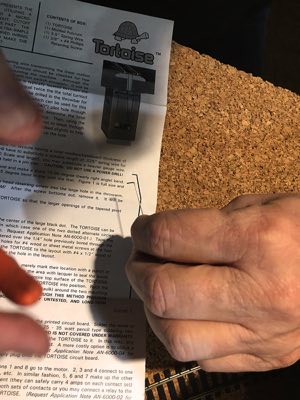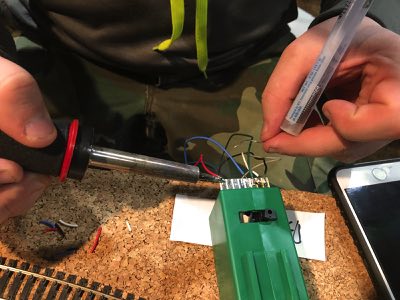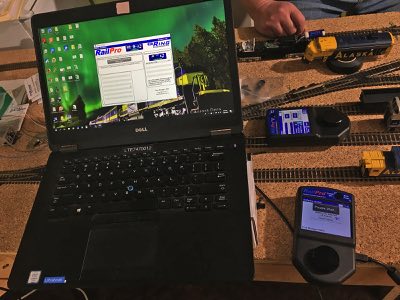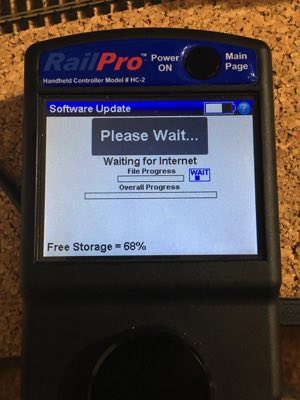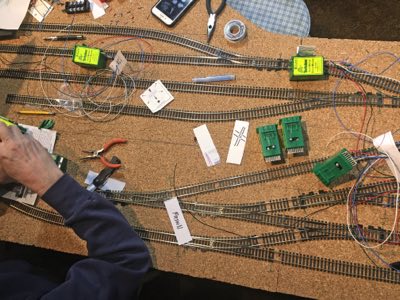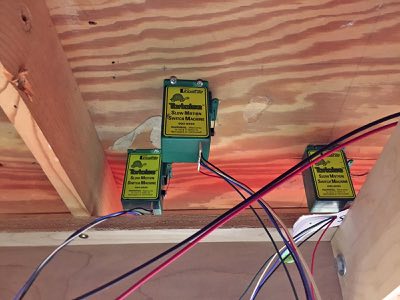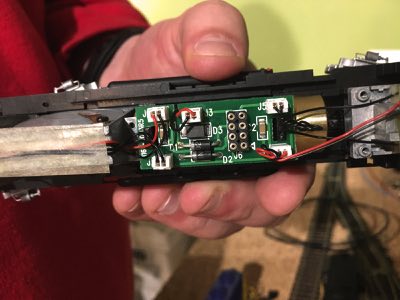 |
||
In the spirit of Valentine's day Terry prepared a truly appropriate meal. She cooked a large pot of chili in her red cookware. Finger foods included red Jell-O jigglers cut into the shape of hearts. The twins were in attendance tonight and they loved picking these up with their hands plus getting a good sugar rush. |
Cooking corn bread in the shape of a heart was a first for Terry and the middle of it was still slightly gooey. Although it was a culinary mistake it proved to be an unexpected hit. |
Sticking with the heart theme she baked a large chocolate chip cookie. By the end of the evening only crumbs were left. |
Red Fiestaware complimented the appearance of the meal. Also on the table were red Gummy hearts and candied conversation hearts. Food coma! |
Mike spent most of his evening running the communication wires for the Tortoise switch machines. Saving the worst for last - mounting Tortoises and running communication wires under the Anchorage yard plywood table requires a certain amount of contortions, strength and acrobatics. While Mike makes the connections Tom holds the flashlight and provides an extra hand. |
Having the patience of Job, Tom continues to work on the pesky Atlas 12.5 degree crossover finally resorting to the power of a Dremel. Our evaluation is the Atlas crossover flanges are out of NMRA spec and a Shinohara crossover purchase may be necessary. |
 |
||
| Mike found a discrepancy in one of our controllers (at right). Ring Engineering advises reload the HC-2b program from their server to fix the issue. | Although our locomotives are brand new their wheels picked up a lot of construction grime and thus are sputtering around the track. John purchased a wheel cleaner years ago, but never took it out of the bag. Tonight Tom hooked the cleaner up and removed grime from our two GP49s. Now there are running smooth as glass. |
Max joins us for the evening, but finds sleeping is more fun than working. |
| One of the handheld controller units has an erroneous screen on a certain sub-menu. Mike hooks up the controller to his laptop, logs into the RailPro website and performs an update. | The update takes a while, but corrects the problem. Mike updates the second handheld controller as well so both are at the latest and greatest software revision. |
Tom and LJ continue the process of installing Tortoise switch machines in the northern end of the Anchorage yard. LJ's labeling system ensures all switches are mounted and accounted for. |
 |
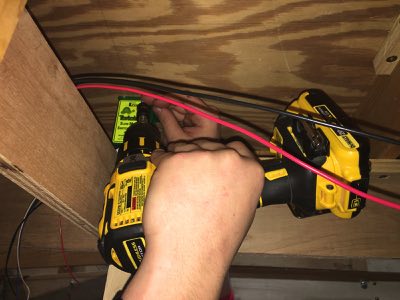 |
|
| LJ solders power and communication lines to each of the Tortoise switch machines. | Tom uses pliers to bend the spring wire to the specified shape and then installs it on the Tortoise switch machine. |
LJ does the necessary acrobatics to install each Tortoise switch machine under the table. Mike is top-side to hold the spring wire in place. |
 |
||
The evening ends with four more Tortoise switch machines in place. |
LJ notices some of the DCC locomotives use an 8 pin socket instead of the 9 pin required by RailPro. Therefore, an 8 to 9 pin convertor harness will need to be ordered. |
Building a layout of this magnitude is not for the faint of heart. The initial costs are fairly expensive and many of the nights concluded with yet another order list. After spending four unsuccessful Thursday nights on the double crossover intermittent power loss issues it is determined we are down to three options. We will try them in this order: 1. Purchase a $12.50 Keep Alive for each locomotive. This will provide 6-20 seconds of power in the event of rail power loss. One of these will be ordered to see if it fixes the problem. 2. Purchase an $80 Shinohara double crossover in hopes another manufacturer's product has better quality. 3. Eliminate the double crossover from the layout. |

